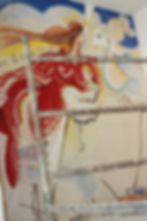Free your mind with Artistic Expression
My painting is all about what it feels like rather than what it looks like! Enjoy
steve valletta valeta 2018 v18 china chinese cultural center
belle arti, art, artist, mellieha, malta, stephen, grima, prints, landscapes, portrait, figure, still life, photos, technical design, graphical communication, artlab, artlabmalta,competition, design, original, constructions, dealer, adenaue, germany, exhibitions, international, famous, caravaggio, michelangelo, donatello, raffaello, rinaxximent,modern, contemporary, antiques, culture, entertainment, experiments, creativity, visual, fleur, azzopardi, emmanuel cini, restoration, heritage, halloween, party, parties, amazonia, fresco, afresco, costumes, mecca, franks, match music, cecil mccarthy, dj,fresco affresco affresk Santa tereza st thereza college gilford francis rotta ta laartivico calabro
Art club 2000twanny darmanin, www.artlabmalta.com, artlabmalta.com, art lab malta
affresk tvm gilbert fenech mellieha valletta pitre lino borg picassso rembrant mur mur artclub 2000

Buon Fresco - Affresk
The Technique
Buon Fresco painting represents the glory of Italian art from the late 13th century to the mid 16th century. Fresco is considered to be the most demanding technique amongst art techniques since the materials used are very humble (sand, lime and pigment) and it requires extensive preparation prior to the actual painting. The term“a fresco” or “buon fresco” refers to the act of painting a mural in which the pigments are diluted in water and applied over freshly laid plaster. The lime of the wet plaster supplies a binding medium and as both dry, pigments are fixed permanently. They become insoluble and acquire a strong solidity which will resist in time.
A Brief History of Fresco Painting
The earliest frescoes we know of come from Bronze Age Greece, about 1600 BC. Only about a hundred years later, Minoan painters were traveling from Crete to Israel and to Egypt to paint fresco paintings on the walls of the palaces there.
The Etruscans and the Romans also did fresco painting. The Etruscans painted frescoes on the walls of rich people’s tombs, showing them eating and drinking in the afterlife. Roman people who couldn’t afford marble walls in their houses often had fresco paintings of marble walls, to make it look like they had marble. Sometimes they painted fancy columns and balconies, or false windows, too.
By the time of the Han Dynasty (100 BC), people were doing frescoes in China, and there are famous frescoes from Ajanta, India, dating to about 500 AD in the Guptan period. These frescoes were on the walls of Hindu temples carved out of caves, and they showed scenes from Hindu stories like the Ramayana.
In the Middle Ages, frescoes were very popular in Italy. Frescoes were a lot cheaper than the older style of having mosaic pictures on the walls. Some famous artists who worked in fresco are Cimabue, Giotto, and Fra Angelico.
These painters mainly painted on the walls of Christian churches, and they showed scenes from the Bible or from the lives of saints. In the Renaissance, Raphael and Michelangelo and Leonardo da Vinci all also painted frescos, but after them, in the 1600s AD, oil painting on canvas became more popular, and most artists stopped doing fresco painting.






























































